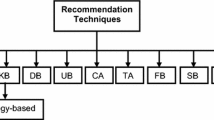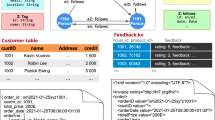Abstract
A foundational ontology contributes to ontology-driven conceptual data modelling and is used to solve interoperability issues among domain ontologies. Multiple foundational ontologies have been developed in recent years, and most of them are available in several versions. This has re-introduced the interoperability problem, increased the need for a coordinated and structured comparison and elucidation of modelling decisions, and raised the requirement for software infrastructure to address this. We present here a basic step in that direction with the Repository of Ontologies for MULtiple USes, ROMULUS, which is the first online library of machine-processable, modularised, aligned, and logic-based merged foundational ontologies. In addition to the typical features of a model repository, it has a foundational ontology recommender covering features of six foundational ontologies, tailor-made modules for easier reuse, and a catalogue of mappable and non-mappable elements among the BFO, GFO and DOLCE foundational ontologies.













Similar content being viewed by others
Notes
There is a page for each of the criteria—ontological commitments, representation languages, software engineering properties, subject domains and applications—within the comparison area of the web interface.
References
Protégé (2014) http://protege.stanford.edu/. Accessed on 09/03/2014
Baclawski K, Schneider T (2009) The open ontology repository initiative: requirements and research challenges. In: Proceedings of the workshop on collaborative construction, management and linking of structured knowledge, CEUR-WS, vol 514. Washington DC, USA. 25 Oct 2009
Borgo S (2011) Goals of modularity: a voice from the foundational viewpoint. In: Proceedings of the 5th workshop on modular ontologies (WoMO’11), frontiers in artificial intelligence and applications, vol 230, pp 1–6. IOS Press (2011). Ljubljana, Slovenia
Camara G, Desprès S, Djedidi R, Lo M (2014) Building a schistosomiasis process ontology for an epidemiological monitoring system. In: Innovations in intelligent machines-4 - recent advances in knowledge engineering, studies in computational intelligence, vol 514, pp 75–99. Springer
Campbell LJ, Halpin TA, Proper HA (1996) Conceptual schemas with abstractions: making flat conceptual schemas more comprehensible. Data Knowl Eng 20(1):39–85
Cowell LG, Smith B (2010) Infectious disease ontology. In: Sintchenko V (ed) Infectious disease informatics. Springer, New York, pp 373–395
Cuenca Grau B, Horrocks I, Kazakov Y, Sattler U (2007) Just the right amount: extracting modules from ontologies. In: Proceedings of the 16th international world wide web conference (WWW’07). ACM (2007). May 8–12, Banff, Alberta, Canada
Cuenca Grau B, Horrocks I, Kazakov Y, Sattler U (2008) Modular reuse of ontologies: theory and practice. J Artif Intell Res 31:273–318
Cuzzocrea A (2006) Combining multidimensional user models and knowledge representation and management techniques for making web services knowledge-aware. Web Intell Agent Syst 4(3):289–312
Cuzzocrea A, Saccà D, Ullman JD (2013) Big data: a research agenda. In: Proceedings of the 17th international database engineering and applications symposium (IDEAS’13), pp 198–203. ACM conference proceedings
d’Aquin M, Schlicht A, Stuckenschmidt H, Sabou M (2009) Criteria and evaluation for ontology modularization techniques. In: Modular ontologies, LNCS, vol 5445, pp 67–89. Springer
Eapen BR (2008) ONTODerm-a domain ontology for dermatology. Dermatol Online J 14(6):16. http://escholarship.org/uc/item/79p7c1hc
Fiorini SR, Abel M, Scherer CM (2013) An approach for grounding ontologies in raw data using foundational ontology. Inf Syst 38(5):784–799
Grüninger M (2009) COLORE: common logic ontology repository. http://ontolog.cim3.net/file/work/OOR-Ontolog-Panel/2009-08-06Ontology-20090806.pdf
Guarino N (1998) Formal ontology and information systems. In: Proceedings of formal ontology in information systems (FOIS’98). IOS Press, Amsterdam, Trento
Guarino N, Guizzardi G (2006) In the defense of ontological foundations for conceptual modeling. Scand J Inf Syst 18(1):9
Guizzardi G (2010) On the representation of quantities and their parts in conceptual modeling. In: Proceedings of 6th international conference on formal ontology in information systems (FOIS’10), Frontiers in Artificial Intelligence and Applications. IOS Press, Toronto
Guizzardi G, Wagner G (2010) Using the unified foundational ontology (UFO) as a foundation for general conceptual modeling languages. In: Theory and applications of ontology: computer applications, pp 175–196. Springer
Guizzardi G, Wagner G, de Almeida Falbo R, Guizzardi RSS, Almeida JPA (2013) Towards ontological foundations for the conceptual modeling of events. In: 32nd international conference on conceptual modeling (ER’13), LNCS, vol 8217, pp 327–341. Springer (2013). 11-13 Nov 2013
Hartmann J, Sure Y, Haase P, Palma R, del Carmen Suárez-Figueroa M (2005) OMV: ontology metadata vocabulary. In: Ontology patterns for the semantic web (OPSW) (2005). Galway, Ireland
Herre H (2010) General formal ontology (GFO): a foundational ontology for conceptual modelling. In: Theory and applications of ontology: computer applications, chap. 14, pp 297–345. Springer, Heidelberg
Kalyanpur A, Parsia B, Sirin E, Cuenca Grau B, Hendler JA (2006) Swoop: a web ontology editing browser. J Web Semant 4(2):144–153
Kazakov Y, Krötzsch M, Simancik F (2012) ELK reasoner: architecture and evaluation. In: Proceedings of the 1st international workshop on OWL reasoner evaluation (ORE’12), CEUR-WS, vol 858, Manchester, UK. 1 July 2012
Keet CM (2007) Enhancing comprehension of ontologies and conceptual models through abstractions. In: 10th Congress of the Italian association for artificial intelligence (AI*IA 2007), LNAI, vol 4733, pp 814–822. Springer, Verlag, Rome, 10-13 Sept 2007
Keet CM (2013) Ontology-driven formal conceptual data modeling for biological data analysis. In: Biological knowledge discovery handbook: preprocessing, mining and postprocessing of biological data, chap. 6, pp 129–154. Wiley
Keet CM, Artale A (2008) Representing and reasoning over a taxonomy of part-whole relations. Appl Ontol Special Issue Ontol Found Concept Model 3(1–2):91–110
Keet CM, d’Amato C, Khan Z, Lawrynowicz A (2014) Exploring reasoningwith theDMOPontology. In: 3rd workshop on ontology reasoner evaluation (ORE’14), CEUR workshop proceedings, pp 64–70. CEUR-WS.org (2014). July 1, Vienna, Austria
Keet CM, Fernández-Reyes FC, Morales-González A (2012) Representing mereotopological relations in OWL ontologies with ontoparts. In: Proceedings of the 9th extended semantic web conference (ESWC’12), LNCS, vol 7295, pp 240–254. Springer, Heraklion, Crete, Greece. 29-31 May 2012
Keet CM, Fillottrani PR (2013) Toward an ontology-driven unifying metamodel for UML class diagrams, EER, and ORM2. In: 32nd international conference on conceptual modeling (ER’13), LNCS, vol 8217, pp 313–326. Springer, Hong Kong. 11–13 Nov 2013
Khan Z, Keet CM (2012) ONSET: automated foundational ontology selection and explanation. In: 18th international conference on knowledge engineering and knowledge management (EKAW’12), LNAI, vol 7603, pp 237–251. Springer, Galway, Ireland. 8–12 Oct 2012
Khan Z, Keet CM (2013) Addressing issues in foundational ontology mediation. In: 5th international conference on knowledge engineering and ontology development (KEOD’13), pp 5–16. SCITEPRESS, Vilamoura, Portugal, 19–22 Sept 2013
Khan Z, Keet CM (2013) Toward semantic interoperability with aligned foundational ontologies in ROMULUS. In: 7th international conference on knowledge capture (K-CAP’13), p. a27 (poster&demo). ACM, Banff. 23–26 June 2013
Khan Z, Keet CM (2014) Feasibility of automated foundational ontology interchangeability. In: 19th international conference on knowledge engineering and knowledge management (EKAW’14), LNAI, vol 8876, pp 225–237. Springer, Linköping, Sweden. 24–28 Nov 2014
Khan ZC, Keet CM (2015) Toward a framework for ontology modularity. In: Proceedings of the annual conference of the South African Institute of computer scientists and information technologists (SAICSIT’15), p. in print. ACM conference proceedings (2015), Stellenbosch, South Africa, 28–30 Sept 2015
Konev B, Lutz C, Walther D, Wolter F (2008) Semantic modularity and module extraction in description logics. In: Proceedings of 18th European conference on artificial intelligence (ECAI’08), Frontiers in artificial intelligence and applications, vol 178, pp 55–59. IOS Press, Patras, Greece, 21-25 July 2008
Konev B, Lutz C, Walther D, Wolter F (2009) Formal properties of modularisation. In: Modular ontologies, LNCS, vol 5445, pp 25–66. Springer
Lange C, Mossakowski T, Kutz O, Galinski C, Grüninger M, Vale DC (2012) The distributed ontology language (DOL): use cases, syntax, and extensibility. arXiv:1208.0293
Loebe F (2006) Requirements for logical modules. In: Proceedings of the workshop on modular ontologies (WoMO’06), CEUR-WS, vol 232. Athens, Georgia, USA. 5 Nov 2006
Martínez Ferrandis AM, Pastor López O, Guizzardi G (2013)Applying the principles of an ontology-based approach to a conceptual schema of human genome. In: 32nd international conference on conceptual modeling (ER’13), LNCS, vol 8217, pp 471–478.Springer, Hong Kong, 11-13 Nov 2013
Masolo C, Borgo S, Gangemi A, Guarino N, Oltramari A (2003) Ontology library. WonderWeb Deliverable D18 (ver. 1.0, 31-12-2003). http://wonderweb.semanticweb.org
Mizoguchi R (2010) YAMATO: yet another more advanced toplevelontology. In: Proceedings of the sixth Australasian ontology workshop, CRPIT, pp 1–16, Adelaide, 10 Dec 2010
Mossakowski T, Lange C, Kutz O (2012) Three semantics for the core of the Distributed Ontology Language. In: Proceedings of the 7th international conference on formal ontology in information systems (FOIS’12), Frontiers in Artificial Intelligence and Applications. IOS Press (2012). 24-27 July, Graz, Austria
Niles I, Pease A (2001) Towards a standard upper ontology. In: Proceedings of the second international conference on formal ontology in information systems (FOIS’01). IOS Press (2001). Ogunquit, Maine, USA. 17-19 Oct 2001
Parent C, Spaccaprieta S (2009) An overview of modularity. In: Modular ontologies, LNCS, vol 5445, chap. 2, pp 5–23. Springer
Seyed AP (28 June 2009) BFO/DOLCE primitive relation comparison. In: The 12th annual bio-ontologies meeting (2009). Stockholm, Sweden
Temal L, Rosier A, Dameron O, Burgun A (2010) Mapping BFO and DOLCE. Stud Health Technol Inf 160(Pt 2):1065–1069
Thomas H, Brennan R, O’Sullivan D (2012) Using the OM2R meta-data model for ontology mapping reuse for the ontology alignment challenge - a case study. In: Proceedings of the 7th international workshop on ontology matching (OM’12), CEUR-WS, vol 946 (2012). Boston, MA, USA, 11 Nov
Tudorache T, Vendetti J, Noy NF (2008) Web-Protégé: A lightweight OWL ontology editor for the web. In: Proceedings of the 5th workshop on OWL: experiences and directions, CEUR-WS, vol 432. CEUR-WS.org (2008). Karlsruhe, Germany, 26-27 Oct
Vale DC et al. (2014) The TONES ontology repository. http://owl.cs.manchester.ac.uk/repository/browser. Accessed on 14/13/2014
Whetzel PL, Noy NF, Shah NH, Alexander PR, Nyulas C, Tudorache T, Musen MA (2011) BioPortal: enhanced functionality via new web services from the National Center for Biomedical Ontology to access and use ontologies in software applications. Nucl Acid Res 39(Web–Server–Issue):541–545
Williams S, Third A, Power R (2011) Levels of organisation in ontology verbalisation. In: The 13th European workshop on natural language generation, pp 158–163. Association for Computational Linguistics (2011). Nancy, France, 28-30 Sept 2011
Author information
Authors and Affiliations
Corresponding author
Additional information
This work is based upon research supported by the National Research Foundation of South Africa (Project UID: 90041) and the Argentinean Ministry of Science and Technology.
Rights and permissions
About this article
Cite this article
Khan, Z.C., Keet, C.M. ROMULUS: The Repository of Ontologies for MULtiple USes Populated with Mediated Foundational Ontologies. J Data Semant 5, 19–36 (2016). https://doi.org/10.1007/s13740-015-0052-1
Received:
Accepted:
Published:
Issue Date:
DOI: https://doi.org/10.1007/s13740-015-0052-1




